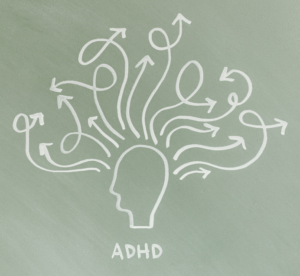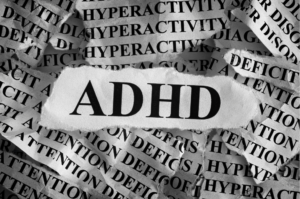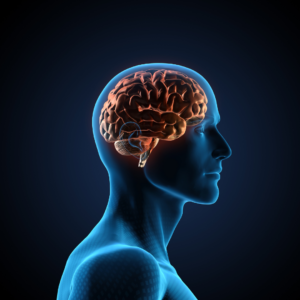
By Connie McReynolds, Ph.D., Licensed Psychologist,
Certified Rehabilitation Counselor, Certified Vocational Evaluator
Parents often find themselves struggling to effectively support their children with ADHD or related behavioral 
problems. ADHD is often perceived as a life-long condition with some parents feeling reluctant to have their child diagnosed due to concerns about stigma. Others may question whether the child’s behaviors are intentional or if the child is willfully neglectful in following through on tasks. Much of the time, neither is true for children with ADHD.
The often overlooked factors for these children are auditory and visual processing difficulties. These difficulties affect a child’s daily life and their ability to learn, grow, and thrive. Fortunately, there is a paradigm shift underway opening a new door providing hope in addressing auditory and visual processing difficulties. Known as neurofeedback , this non-invasive brain training process helps resolve the underlying root causes of behaviors associated with ADHD. And is emerging as an effective alternative reshaping traditional approaches to ADHD.
The Root of the Problem
Auditory and visual processing problems are not about the physical ability to hear or see. They are about the brain’s ability to work with (process, remember) auditory and visual information. Quite importantly, this is not about cognitive limitations, developmental delays, intellectual limitations, or other similar diagnostic conditions. Although these diagnostic labels have been applied to children who have auditory and visual processing problems, sometimes erroneously.
 When children are unable to follow through, complete schoolwork, self-regulate, focus, concentrate, remember instructions, frequently lose items, or are disorganized, they may be diagnosed with ADHD. Most people, whether an adult or child, are unable to explain their problem so others can understand what they are experiencing. And children can feel overwhelmed when they are unable to please parents and teachers, often not understanding why people get frustrated with them.
When children are unable to follow through, complete schoolwork, self-regulate, focus, concentrate, remember instructions, frequently lose items, or are disorganized, they may be diagnosed with ADHD. Most people, whether an adult or child, are unable to explain their problem so others can understand what they are experiencing. And children can feel overwhelmed when they are unable to please parents and teachers, often not understanding why people get frustrated with them.
For parents and teachers, it may help to know that these children are not misbehaving on purpose, and they are not failing because they are lazy or are not trying hard enough. Children want to succeed and make adults happy; however, when they fail at doing so regardless of how hard they try they can become scared, frustrated, act out, and struggle to please those who matter most to them. This can lead to lowered self-confidence, poor self-esteem, and they can become very hard on themselves feeling they are not smart, or worse.
Louis’s Story
Louis* (age 11) was diagnosed with emotional disturbance and attention deficit hyperactivity disorder (ADHD). His behaviors included impulsivity, emotional disruption, potential for self-harm, decreased focus, history of family conflict, overstimulated by loud sounds, sensitive to chaos, and being ‘hyper.’
Louis was also a pleasant child who seemed to want to do his best, but something was getting in his way. He was struggling in school, and he was in conflict with other children. So, it was important to understand what was contributing to his difficulties and determine if a different approach from the traditional interventions would make a difference in his life.
Children, such as Louis, have been diagnosed with ADHD, emotional disorder, oppositional defiant disorder, intermittent explosive disorder, conduct disorder, unmanageable behaviors at home and school, cognitive limitations, and other types of conditions. At the core of many of the symptoms of ADHD, behavioral problems, and emotional problems resides a relatively unknown contributor, which is auditory and visual processing problems. And this is why the traditional approaches of medications and behavioral interventions have not resulted in long-term lasting resolution for many children.
Decoding Behaviors
The behaviors of children with attention, emotional difficulties, and learning problems are commonly misunderstood, in part because what we believe about a behavior affects how we think and react to the behavior. For example, a psychiatrist may see mental dysfunction and prescribe medications while a behaviorist may see behavioral problems and implement behavioral interventions. Parents may see bad behavior and implement punishment. A teacher may feel disrespected, and schools may expel a child. Still others may see a child in need and provide support.
When properly decoded, behaviors are a type of language children use to tell adults what they are going through. Viewing problematic behaviors as a form of communication to be decoded opens a different dialogue than the one typically expressed. In part, we are able to develop greater compassion for the child and their behaviors while refraining from too much judgement about the behaviors. To open the door to alternative ways of resolving behavioral problems, a shift is needed from focusing on eliminating the behavior as quickly as possible to understanding what the behaviors mean.
Returning to Louis’s story…
Louis’s Initial Assessment
Louis was given a 20-minute computer based assessment1 that looked at 37 areas of his auditory and visual processing. The following is a recap of the findings from his intake assessment divided into auditory and visual processing areas.
Louis’s Auditory Processing Weaknesses
Louis had several areas of significant auditory weaknesses that were impacting his ability to learn, grow, and  thrive in his life. These included Auditory Vigilance which caused auditory inattentiveness. His Auditory Elasticity was severely impaired limiting his ability to get back on track following inattention. Louis’s Auditory Focus was in the extremely impaired range causing significant difficulty maintaining attention and his Auditory Prudence was weak causing auditory distractibility. His Auditory Consistency was severally impaired affecting his ability to accurately remember information and his Auditory Steadiness was extremely impaired causing difficulty keeping up with verbal information. The combination of these converged in limiting his Auditory Comprehension, which was in the extremely impaired range, affecting his ability to remember, follow rules, and understand instructions.
thrive in his life. These included Auditory Vigilance which caused auditory inattentiveness. His Auditory Elasticity was severely impaired limiting his ability to get back on track following inattention. Louis’s Auditory Focus was in the extremely impaired range causing significant difficulty maintaining attention and his Auditory Prudence was weak causing auditory distractibility. His Auditory Consistency was severally impaired affecting his ability to accurately remember information and his Auditory Steadiness was extremely impaired causing difficulty keeping up with verbal information. The combination of these converged in limiting his Auditory Comprehension, which was in the extremely impaired range, affecting his ability to remember, follow rules, and understand instructions.
Louis’s Visual Processing Weaknesses
In addition to auditory processing difficulties, his Visual Focus was in the extremely impaired rage interfering with his ability to maintain consistent visual attention leading to errors on math, spelling, and reading. Louis’s Visual Prudence score was in the moderate to severely impaired range causing him to be easily distracted with visual activity around him. His Visual Consistency was in the moderate to severely impaired range affecting his ability to perform visual tasks reliably increasing the potential for errors. And his Visual Steadiness was in the extremely impaired range diminishing his ability to perform visual tasks quickly or accurately.
Louis’s visual processing challenges accumulated to impact his Visual Comprehension, which was in the severely impaired range contributing to substantial difficulties in following instructions for visual tasks. Louis also had a mildly impaired score on Fine Motor Hyperactivity contributing to self-control difficulties, confusion, and impulsivity.
How Neurofeedback Transforms Lives
To address Louis’s areas of processing weaknesses, he participated in 10** hours of brain training (EEG biofeedback/neurofeedback) specifically targeted at training his brain to develop stronger brain pathways. Using repetition, the brain can learn and retain new brain processing abilities subsequently resulting in better self-regulation, improved concentration, focus, attention, and memory.
Neurofeedback is considered non-invasive, which means nothing is administered to the brain or body, unlike medications. The brain is simply practicing new skills and when these new skills are learned and retained through repetition, the brain automatically uses the new skills without the person needing to remember how to perform the new skills. This is the same process the brain has used throughout a person’s lifetime to learn new tasks from walking and talking, to riding a bike and driving.
Upon completion of 10 hours of neurofeedback, Louis was reassessed. His visual processing areas significantly improved, and his hyperactivity was resolved. Although he had a few remaining areas of weakness which would generally be addressed with an additional 10 hours of training, his caregivers were pleased with his results and felt his improvements were sufficient.
The changes Louis experienced in his life were representative of the changes that occur when auditory and visual processing problems are resolved. His behavioral problems were nearly a thing of the past, his self-harming concerns were no longer present, he was able to follow instructions more consistently, his impulsive behaviors were no longer a persistent challenge, and he was a happier child.
Unleashing the Power of the Brain
 Auditory and visual processing problems interrupt the brain’s ability to focus, attend, remember, and follow through. Without the ability to consistently attend to information, the brain struggles to effectively store the information. This makes it difficult for children with attention problems to be consistent enough to remember information and is one of the main reasons why children with auditory and visual processing problems struggle to learn or remember to follow the rules.
Auditory and visual processing problems interrupt the brain’s ability to focus, attend, remember, and follow through. Without the ability to consistently attend to information, the brain struggles to effectively store the information. This makes it difficult for children with attention problems to be consistent enough to remember information and is one of the main reasons why children with auditory and visual processing problems struggle to learn or remember to follow the rules.
Neurofeedback capitalizes on power of neuroplasticity which means that the brain can change and adapt to new information. The word neuro means brain, and plasticity means to change. The brain changes its own structure and functioning in response to activities and mental experiences. It literally changes all the time based on what we think and do.
By practicing activities, the brain develops neuronal pathways that strengthen each time we repeat the activity. These pathways run our brain processing and are the foundation of everything we learn how to do. They either work effectively or they do not. When they work well, we’re able to accomplish our daily tasks. When they do not, as in the case of auditory and visual processing problems, a person can struggle to learn and remember.
When the neuronal pathways aren’t making strong connections, learning can be difficult, if not impossible. If there’s an interference with the brain’s ability to remember information, it will be more difficult for the child to “wire” the information in the brain. Luckily, a person’s brain has the potential to rewire itself, which means we can improve many kinds of conditions. By using the power of the brain and training programs such as neurofeedback that are designed to strengthen areas of weakness through repetition, it is possible to ‘wire in’ changes that can be long-lasting.
Conclusion
Recognizing that to resolve symptoms and behaviors associated with ADHD and similar conditions requires more than the traditional approaches used in past decades is crucial. ADHD and learning challenges are often rooted in auditory and visual processing problems, which casts a new light on the previously unrecognized cause of these problems.
Neurofeedback offers an effective alternative approach for children (and adults) in addressing the core problems faced by children like Louis. Parents and teachers now have the opportunity to redefine the narrative for these children and the myth that ADHD is a life-long diagnosis can be dispelled.
Through a different lens of perception, it becomes possible to change lives for the better and achieve long-lasting results creating a win-win for everyone.
—
Dr. Connie McReynolds is a Licensed Psychologist and Certified Rehabilitation Counselor with a 30-year career in rehabilitation counseling and psychology. Earning her Ph.D. from the University of Wisconsin-Madison, she is the visionary behind pioneering neurofeedback clinics in Southern California aimed at treating ADHD, anxiety, depression, trauma, and other conditions. Dr. McReynolds is an acclaimed author, with her book Solving the ADHD Riddle reaching #1 on Amazon in eight categories. She is a respected figure in her field and a beacon of hope, passionately committed to improving the quality of life of individuals of all ages through her innovative approaches. For more visit www.conniemcreynolds.com.
References
- Sandford, J.A. & Sandford, S.E. (2015). IVA2: Integrated Visual and Auditory Continuous Performance Test Manual. North Chesterfield, VA: Brain Train, Inc.
*Name changed to maintain confidentiality.
**Most individuals need 20 hours of brain training to achieve goals.

Leave a Reply